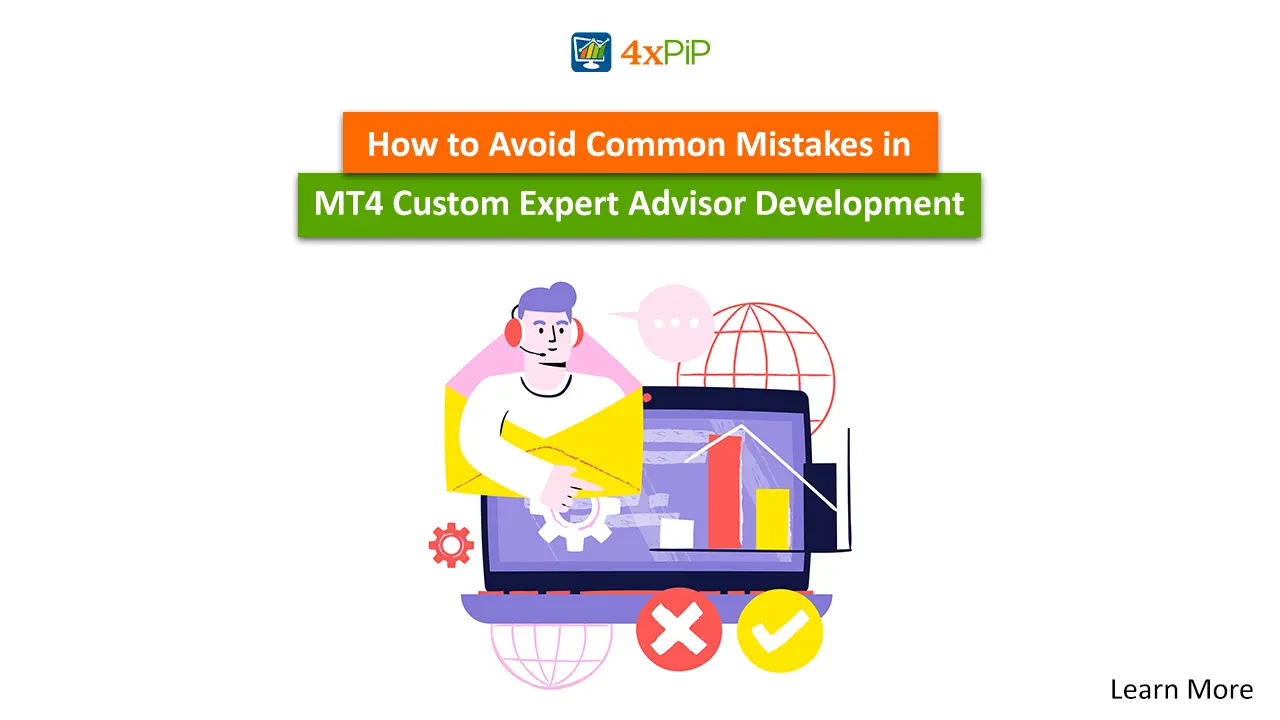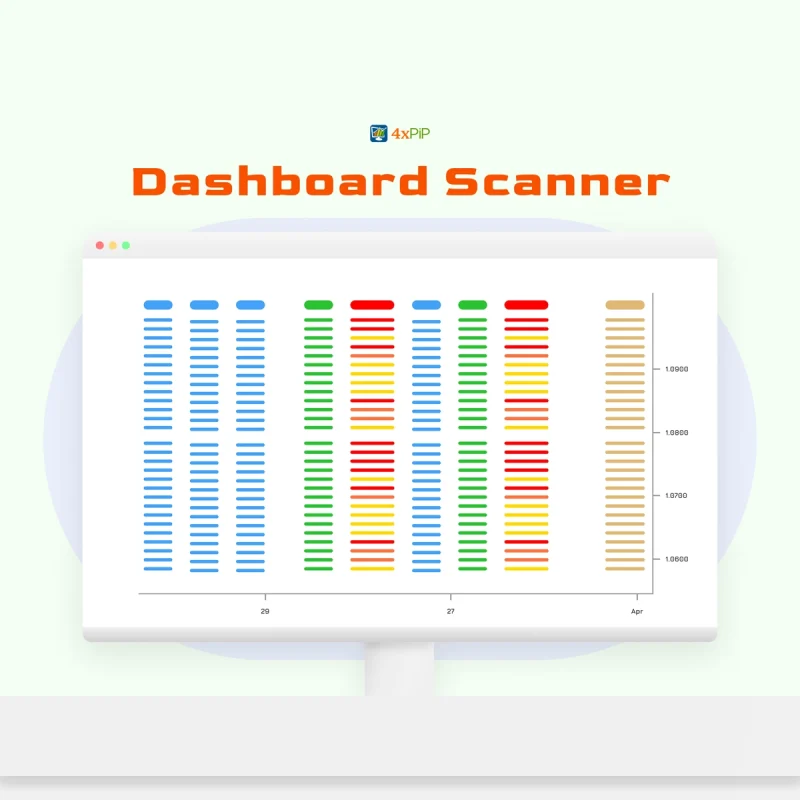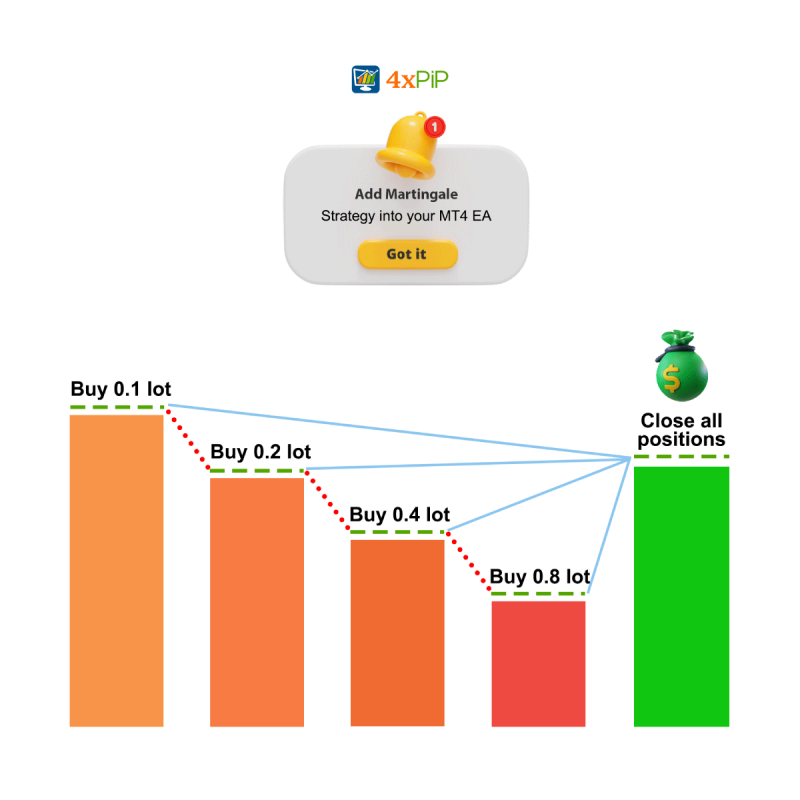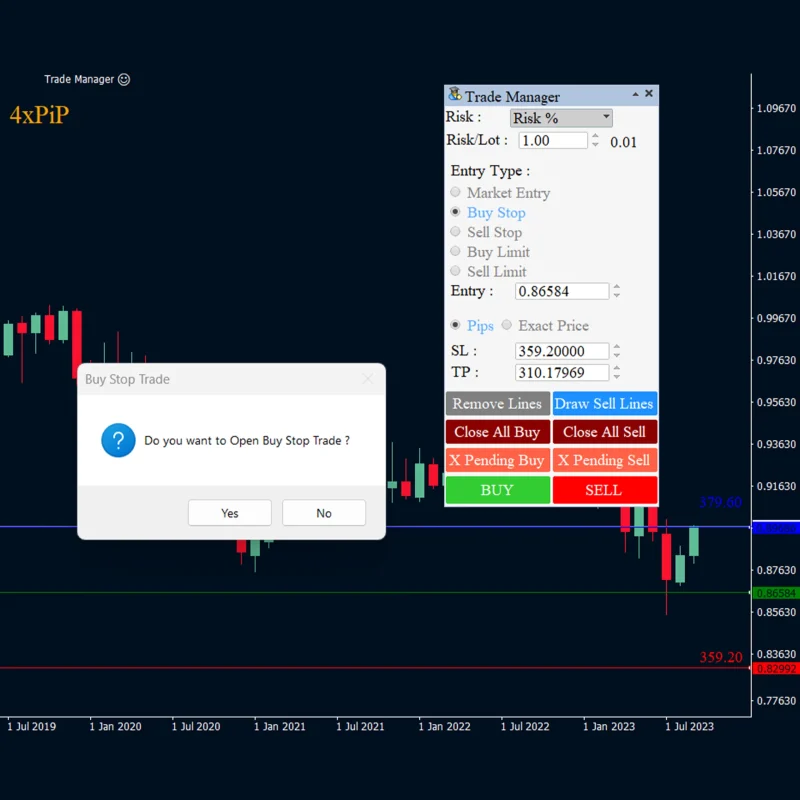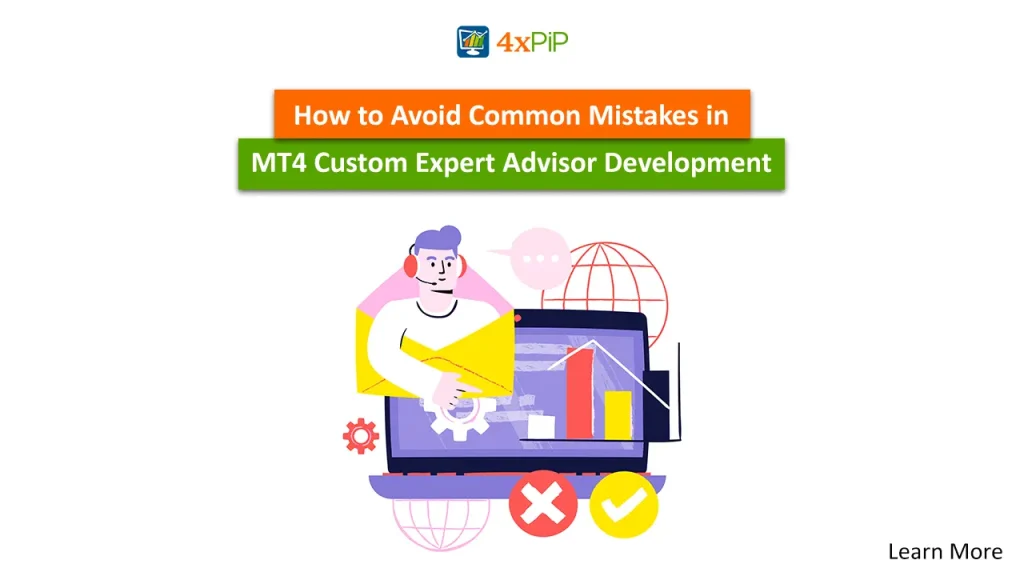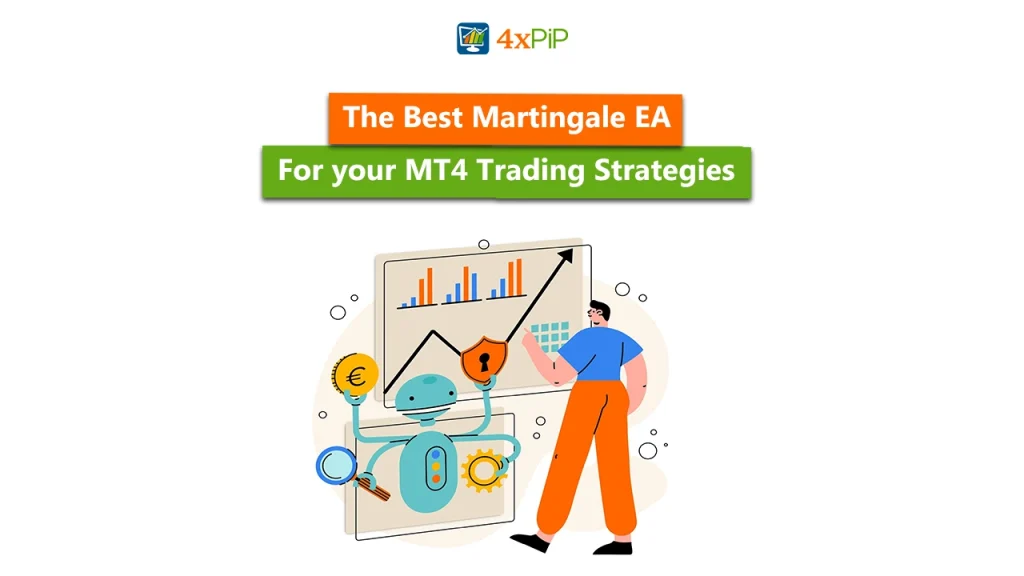Developing MT4 Custom Expert Advisors (EAs) requires precision, not guesswork. Many traders attempt to automate their strategy without structured planning, which often leads to unreliable execution or wasted development costs. The most common problems include incomplete strategy definitions, overlooking risk management parameters, and skipping essential backtesting. These mistakes don’t just delay progress, they can cause an EA to behave unpredictably in live markets.
A practical solution is to use 4xPip’s Custom EA development services, where strategies are converted into working bots with backtesting, optimization, and money management integration, ensuring traders avoid errors and achieve consistent execution.
Defining a Clear Trading Strategy Before Coding

The foundation of every reliable MT4 Custom Expert Advisor is a well-documented trading plan. A vague or incomplete set of rules almost always leads to flawed EAs, since the bot can only execute what is asked. Traders should document exact conditions for entry, exit, and risk management before any coding begins. Without these details, developers are left to make assumptions, and the resulting EA may behave unpredictably in live trading. One useful way to avoid this mistake is to write your strategy like a checklist: define market conditions for entry, outline stop loss and take profit logic, and specify how the bot should behave in unstable versus stable markets.
At this stage, using 4xPip’s MT4 Custom Expert Advisor development becomes practical because our developers only need your predefined rules to start coding. By having your plan ready, the conversion process is faster, and we can move directly into backtesting and optimization. This ensures the EA not only mirrors your strategy but also performs consistently across different market conditions. In other words, the clearer your trading rules are, the more accurate and dependable the final EA will be.
Avoiding Overfitting During Backtesting
Overfitting occurs when an EA is tuned too closely to past market data, making it look highly profitable in backtests but unreliable in real trading. This usually happens when traders push parameter optimization too far, adjusting every variable until the EA fits historical data perfectly. While it may show impressive backtest results, such an EA often collapses in live markets because it was designed to “fit the past” instead of handling future price movement. A safer approach is to use out-of-sample testing and forward testing on demo accounts to verify that the EA performs consistently outside the optimized dataset.
At 4xPip, we build this protection into our workflow. After converting a trader’s strategy into code, our developers backtest and optimize responsibly, then verify results with out-of-sample data. To try this yourself, start by preparing your rules, then hire a MetaTrader 4 EA developer from our team. Once your bot is coded, we handle the backtesting and forward testing steps so you can be confident the EA is not overfit, but built to perform reliably under live conditions.
Managing Risk Parameters Properly
Ignoring stop-loss, take-profit, or position-sizing rules is one of the quickest ways to blow up a trading account. Many traders make the mistake of sticking to fixed lot sizes or neglecting drawdown control, which leaves them vulnerable when volatility shifts. Flexible risk parameters ensure that your EA adapts to market changes instead of locking into rigid rules.
With 4xPip Custom Bot Development, risk management features like stop loss, trailing stops, and money management can be coded directly into your EA.
Key practices for risk management in EAs:
- Dynamic Position Sizing: Adjust lot sizes based on account equity or volatility rather than fixed amounts.
- Adaptive Stop-Loss & Take-Profit: Use ATR or volatility-based levels instead of static points.
- Trailing Stops: Lock in profits while keeping trades open during favorable trends.
- Drawdown Limits: Program a maximum equity loss threshold to automatically halt trading.
- Multiple Risk Modes: Switch between conservative, balanced, or aggressive risk settings depending on market conditions.
- Forward Testing Risk Settings: Validate stop-loss and lot-sizing rules on demo accounts before live deployment.
Ensuring Code Efficiency and Stability
Inefficient loops, unnecessary indicators, and poor resource handling can make an EA unstable, causing delays in order execution or even platform crashes during high volatility. Code stability is important because even a few milliseconds of lag can lead to missed entries, slippage, or duplicate orders. A well-structured EA should use only the required calculations, minimize redundant calls, and be optimized to handle multiple market conditions without freezing the MetaTrader terminal. Testing across different timeframes and assets helps confirm whether the code can handle real trading environments reliably.
At 4xPip, we design EAs with efficiency in mind from the ground up. To get started, a trader simply shares their strategy with us, our programmers then convert it into a bot, optimize the code, and remove unnecessary processes that slow down execution. When you hire a MetaTrader 4 EA developer, you receive not only the ex4/ex5 file ready for live use but also a bot that has been backtested, optimized, and checked under multiple conditions for stability. This ensures smooth performance, reduced risk of platform crashes, and faster trade execution even in unstable markets.
Testing Across Multiple Market Conditions
Testing an EA on just one currency pair or timeframe can give a misleading sense of success. Market conditions like trends, ranges, and volatility spikes affect how strategies perform. Without broad testing, an EA may execute perfectly in a calm market but fail during high volatility or trending conditions. To ensure the EA’s performance:
- Test on multiple currency pairs, commodities, or indices to cover different market behaviors.
- Use various timeframes to confirm the strategy’s adaptability.
- Apply forward testing on demo accounts to simulate real-time execution.
- Monitor performance during both trending and ranging periods to detect weaknesses.
The Custom EA developers at 4xPip convert your strategy into a bot designed to perform consistently across diverse market environments, while minimizing unnecessary complexity and ensuring stable execution.
Documenting and Updating the EA Regularly
Clear documentation of an EA’s rules, code changes, and performance history is essential for maintaining control over automated trading. Without proper records, debugging errors or adapting the bot to new market conditions becomes difficult, which can compromise performance and risk management.
- Keep a log of every rule implemented, including entry, exit, and risk parameters.
- Record all code modifications and versions to track improvements or troubleshoot issues.
- Document historical performance results, noting market conditions during testing.
- Schedule periodic reviews to adjust parameters for evolving market trends.
4xPip’s MT4 Custom EA Developers ensure the bot is well-documented, maintains stability across updates, and can be modified efficiently as strategy requirements or market conditions change.
Summary
Developing a reliable MT4 Custom Expert Advisor (EA) requires careful planning, disciplined coding, and thorough testing. Many traders encounter setbacks due to incomplete strategy definitions, insufficient risk management, overfitting during backtests, and inefficient or unstable code. Documenting precise trading rules, integrating dynamic risk parameters, optimizing code efficiency, and testing across diverse market conditions ensures an EA performs consistently in live trading. Partnering with experienced developers at 4xPip helps traders translate strategies into automated bots with thorough backtesting, optimization, and integrated money management. Regular documentation and updates further enhance control, adaptability, and long-term performance.
4xPip Email Address: [email protected]
4xPip Telegram: https://t.me/pip_4x
4xPip Whatsapp: https://api.whatsapp.com/send/?phone=18382131588
FAQs
- What is an MT4 Custom Expert Advisor?
An MT4 Custom Expert Advisor is a programmed trading bot for MetaTrader 4 that automates a trader’s strategy. It can execute trades, manage risk, and monitor markets according to predefined rules, reducing the need for manual intervention. - Why is defining a clear trading strategy important before coding an EA?
A clear, documented strategy ensures the EA executes exactly as intended. Vague rules lead to assumptions, which can make the bot behave unpredictably in live markets. Detailed entry, exit, and risk conditions form the foundation of a dependable EA. - What is overfitting, and why is it risky?
Overfitting happens when an EA is optimized too closely to historical data, performing exceptionally in backtests but failing in live markets. Using out-of-sample and forward testing helps verify the EA can handle future market conditions reliably. - How should risk parameters be managed in an EA?
Effective risk management includes dynamic position sizing, adaptive stop-loss and take-profit levels, trailing stops, drawdown limits, and multiple risk modes. These measures help the EA adjust to changing market volatility while protecting account equity. - Why is code efficiency important for an EA?
Inefficient or poorly structured code can delay order execution, cause slippage, or even crash the MetaTrader platform during high volatility. Optimized code ensures stable, fast, and reliable trade execution under various market conditions. - How can an EA be tested across multiple market conditions?
Testing involves running the EA on different currency pairs, timeframes, and market environments, including trending and ranging periods. Forward testing on demo accounts simulates real-time performance before live deployment. - What role does documentation play in EA development?
Documentation keeps track of trading rules, code changes, and historical performance. It makes debugging, optimization, and future updates easier, ensuring the EA remains reliable as market conditions evolve. - How does 4xPip assist in Custom EA development?
4xPip converts a trader’s strategy into a fully functional EA, integrates backtesting and optimization, implements money management, and ensures code efficiency and stability. This helps traders avoid common mistakes and achieve consistent results. - Can a well-developed EA adapt to changing markets?
Yes. By including dynamic risk parameters, regular updates, and thorough testing, a properly developed EA can adjust to volatility, trends, and evolving market behavior, maintaining stable performance over time. - How often should an EA be reviewed or updated?
Periodic reviews are essential to adjust rules, optimize performance, and add new strategies. Scheduled updates ensure the EA remains effective and aligned with changing market conditions and trading goals.

